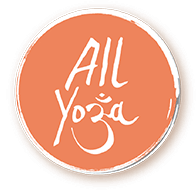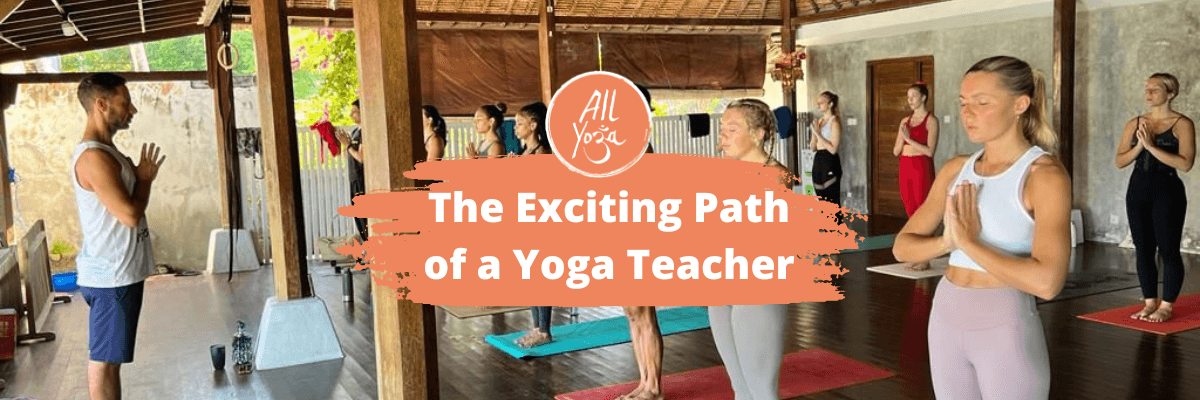The Exciting Career of New Yoga Teacher: Opportunities, Paths, and Tips
Becoming a certified Yoga Teacher can open up exciting career opportunities. Your yoga teaching career can even take you around the world! New yoga teachers have many fulfilling paths, and the growth prospects are enormous. But if you are considering embarking on the exciting journey of becoming a yoga teacher, what exactly are the responsibilities of a teacher? Where will you find teaching opportunities? How can your yoga teacher career evolve and grow?
In this article, we’ll discuss the options available once you’ve completed a yoga teacher training. Being a Yoga Teacher is a rewarding career and will allow you to share your passion for yoga with others!
Job Responsibilities of a Yoga Instructor
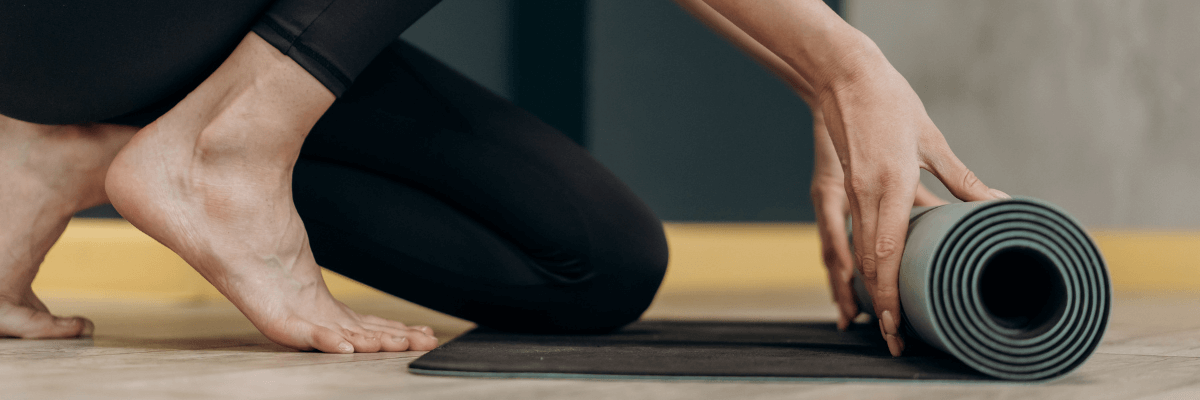
Teaching yoga isn’t just about showing up to teach a class with a sequence. There are varying job responsibilities you’ll need to consider as a new yoga teacher. You’ll need to be able to plan, instruct and deliver effective, safe yoga classes suitable for a range of abilities, from having appropriate modifications for beginners while teaching different variations of poses for more experienced students.
Leading a class as a new teacher can seem daunting, but you must improve your leadership skills to teach a yoga class effectively. Make sure everyone in the class can hear you. Demonstrate postures in a place where students can easily see you. You’ll need to accurately instruct alignment and know when to modify a sequence depending on who attended the class that day. Knowing the correct terminology and not mixing up your downward-facing dogs with your upward-facing dogs is also important!
A yoga teacher is considered a fitness and wellness professional in many wellness settings. So you’ll need to demonstrate high levels of customer service while teaching in a patient, calm manner. Remember what it is like starting a new yoga class for the first time as a student. Be motivational and encouraging to your students too. It’ll help your students feel supported in your classes to keep them returning.
Another important responsibility is to promote meditation and breathing practices in your classes. Making sure the count you have isn’t too fast or too slow. Practice your meditation script on a friend or family member to know it flows smoothly. You’ll need to incorporate different relaxation techniques into your classes, manageable practices that students can use at home. Encouraging mindfulness will go hand in hand with improving your student’s well-being.
Promoting your yoga offerings is crucial to being a yoga teacher, mainly if you teach in a more independent setting, i.e., in community centers. You’ll need to learn how to advertise your classes or workshops on different social media channels. As well as knowing who your target audience is and how to reach them. Consider sharing your love of yoga through images on Instagram or starting a yoga blog through your website.
What teaching opportunities do I have as a Yoga Instructor?

Group classes
The most common opportunity for newly qualified yoga teachers is teaching group classes. They are a great place to start, as you’ll learn new skills and teach different abilities. It’s an excellent way to build rapport and a connection with your students and watch their yoga journey transform and grow. In group classes, you can introduce weekly or monthly themes, work to a peak pose and create classes that coincide with events such as the full moon, Halloween, or summer solstice. You will also be able to use your knowledge of adjustments and yoga props to help students get the most out of a pose. Teaching group classes will build your confidence as a newly certified teacher.
One-to-one classes
Another opportunity is to offer classes in a one-to-one setting. You may teach yoga classes at a student’s home or private space. Teaching one student is very different compared to a group class; you can offer individualized sequences and poses. It gives you time with the student to troubleshoot any postures they find aren’t working for them. As well as create personalized yoga sequences they can practice at home. Some of the most rewarding classes I’ve taught have been one-to-one classes. It also gives the student time to ask you any questions they have and for you to impart your yoga knowledge to them.
Yoga courses
Over time when you have regular students, you can create and deliver yoga courses. I did a Yoga for Beginners course when a group of new students joined my group classes. This gave them a foundation to build when trying new poses in group classes. It gave me more time to teach breathing techniques that sometimes I only had a shorter amount of time to teach in a group. In turn, it gave the students more confidence in their practice and in trying more advanced pose variations. You could teach courses such as yoga for runners, improving posture, and yoga for stress relief.
Yoga for events
Creating classes for celebrations and events, such as hen parties or birthdays, is a unique and fun way to teach yoga. In a group of friends, try offering partner yoga postures to connect the group. Or link your event to a suitable theme. Advertise package deals for private yoga groups and research venues with stunning locations.
Yoga Workshops
Running regular yoga workshops is a fantastic way of reaching more students and allowing your regular students to learn more about yoga. Focus on a theme or an annual event and weave that throughout your workshop. Workshops help connect students and help build a yoga community. Find your yoga theme, research, plan, advertise, instruct, and deliver your workshops.
Yoga training programs
When you become an experienced teacher, you may build your own yoga teacher training programs. Yoga training can be taught over a 23-day intensive program or you may run the courses on a part-time basis over a couple of years. Teach students how to create classes, how to teach alignment, and how to advertise their classes. Training new teachers can be rewarding as you watch your trainees find their voice as yoga teachers.
Further training
Through regular teaching, you may find there is a certain group, age range, or demographic that you feel drawn to help. You may find yourself wanting to expand your yoga teacher career and knowledge by furthering your yoga education. Courses such as pre and post-natal yoga, yoga for seniors, aerial yoga, yoga for menopause, yoga for teens, or kids yoga will help you expand your teaching knowledge and ability. Having more training under your belt will open up your teaching options even more!
What are the different yoga teacher career paths?

Teaching yoga classes doesn’t just start and end at a yoga studio, which is still an excellent place to teach! There are many other settings where yoga teachers run successful classes with regular students.
Yoga Studios
Often seen as a gateway to yoga, yoga studios have busy timetables offering many different yoga styles and teachers every week. Some studios will take on new teachers as apprentice teachers after successfully completing a yoga teacher training. New teachers will be expected to audition and teach their classes to senior teachers before being given a regular teaching spot. Teaching in studios is a great way to get constructive feedback and guidance from experienced teachers. You’ll also be able to reach a wide range of students who regularly attend other classes. Studios will also help with advertising your classes to their students too. It’s a great way to meet other teachers, network, and build relationships within your yoga community.
Gyms/Leisure centers
Teaching classes at gyms and leisure centers are another popular way to build a following of students. Gyms and leisure centers often have booking systems so attendees can quickly book slots for classes. Many gyms also encourage other aspects of wellness and fitness, which is usually where yoga classes come in. Tailor your gym classes to encourage mindful stretching and a greater mind and body connection – you may even help students increase their PBs!
Spas, wellness retreats, and resorts
Wellness settings such as spas or resorts provide a calming and luxurious backdrop to teach from. Teaching at retreats and resorts may even take your yoga teaching career around the world! Work with the center to create different yoga classes and how you would like them advertised to cater to different students. Make use of any stunning outdoor space, and consider using nature as inspiration for your class themes. I spent some time teaching on a Private Island in Cambodia and set flowing Vinyasa classes next to the ocean!
Corporate classes
Branching out to large companies to offer classes is another unique yoga teacher career path. Many companies are pushing employee wellness, and yoga at the office is the perfect place for a class! Some companies may pay a standard rate, or you may be able to set a rate per student. Some companies may pay for yoga classes, or students may be expected to pay for the classes themselves. Corporate classes are often most in demand in the early mornings, at lunchtime, or after working hours. Explore deeper relaxation techniques in evening classes or help students build up a sweat in an early morning class.
Schools
As yoga becomes more popular, many schools seek to provide classes to students of all ages. If teaching children inspire you, think about reaching out to local schools. Teaching children calming practices can help them learn how to focus, relax and handle exam stress. You may need to apply for background checks before being able to teach in schools.
Community centers
Community centers are great places to hold regular classes. Usually located in the heart of a local community, renting a space is generally lower in price. Centers will often help yoga teachers with advertising and marketing classes too. Many community centers provide class slots in the evening or morning so that you can appeal to a broader group of students too. Guide regular students through a theme over several weeks to help them deepen their yoga practice.
What salary does a yoga teacher earn?

On average, in the US, yoga teachers earn around $26.96 an hour, with a salary between $31,000 and $100,000, depending on the factors I’ve mentioned above. In the UK, the average hourly rate for a yoga teacher is £25.03, with self-employed teachers earning between £18,000 and £32,000.
Yoga teacher salaries vary, depending on whether you teach part or full-time – how much you earn is up to you! Several factors can affect your yoga teacher’s salary, such as where you teach, your niche, your specialization, and how often you can teach. If you undergo specific training and specialize, you may end up teaching a style of yoga that is in more demand. You could train in Yin Yoga or acro yoga, for example. Another factor that may increase a yoga teacher’s income is other complementary skills they have. Having qualifications in personal training, nutrition, energy work, massage therapy, and health coaching can also help you increase your income. Other skills, such as online marketing, including SEO experience, will also make an impact on who you reach.
The best thing you can do for your yoga teacher career is to put yourself out there, connect with other teachers and simply teach. Experience is important, but so is how and what you are teaching. The role of a yoga teacher is diverse, and your skills will continue to grow as your career progresses. The career opportunities are endless; you just need to bring your entrepreneurial spirit and the magic of yoga. If you’ve been lucky enough to find your calling in teaching yoga, take your first step today by signing up for a yoga teacher training!
Helpful Tips For New Yoga Teachers
Once you’ve experienced the timeless wisdom and magic of yoga, many people develop a strong desire to share this ancient practice with the world. But how do you become a fully fledged Yoga teacher? Where do you start? How do you get a regular slot teaching?
First of all, embarking on the journey of a Yoga Teacher Training will give you the credentials and the right skills to step onto the path to becoming a Yoga Teacher. After you’ve found which style of yoga gives you joy, it is time to find a training that suits you and check whether you meet their prerequisites to apply for their course. There are an abundance of trainings right across the globe from two-year non-residential trainings to intensive 200- hour trainings in countries; from India to Indonesia. Picking the right training is important, so if you’d like to find out more on what aspects you’ll need to consider, read our blog on How To Choose The Right Yoga Teacher Training For You.
After you’ve graduated and you are out in the big, wide world of yoga ready to teach, there are a few things you’ll need to put in place and to consider doing to help you live your dream.
What to Organize Before Teaching
One of the most important things to have in place as a Yoga Teacher is your insurance. Nowadays, there are many companies that specialize in insurance cover specifically tailored to Yoga Teachers. Check that the style of yoga that you teach is covered and where you are insured to teach, as if you were teaching at your home, you may need more cover. Ask your insurance company if you need any additional cover if you teach pre or postnatal yoga, aerial yoga, kids yoga, and any other yogic practices other than asana. Most companies will give you comprehensive Public Liability Insurance, which will cover you to teach at studios or community centres, but check if where you are teaching requires anything else as well.
Storing your certificates and filing them together is a sensible thing to do for when you need to show them to either a studio or an organization before you teach. Keep them clean and neat in a folder, but as well consider making copies of your certificates if anything were to happen. Some establishments will request to see your certificates, others may not, but it is an important document to keep safe for the future.
CPR training or First Aid Training is also often a requirement to be able to hold classes at most yoga studios or fitness centers. These courses can last a day or some can be done over several days if you are unable to commit to a full day in one go. Before signing up to one of these courses, check how long your certificate will last for, so you know when you’ll need to attend a refresher session to keep you up to date and certified.
Who are you teaching?
Deciding on who your target audience is, is important. Try to be as inclusive as possible as you find your niche. There may be the chance of spreading yourself too thin if you are trying to appeal to anyone and everyone all at once. Ask yourself, who are you trying to help and why? Think about the needs of those around you, and how yoga may be able to bridge that gap.
Selecting your niche for your yoga teacher career can seem difficult at first but think about what inspired you to teach originally. If your passion lies in helping teach younger generations yoga, so that they can deal with the pressures of school and college, maybe kids yoga or teens yoga is your niche? Or, if you have an interest in sport maybe consider creating classes for athletes or dynamic Vinyasa Flow sessions. The list can be endless so brainstorm what you are passionate about and how you can use that passion with yoga to serve those within your community.
Getting started teaching
“Don’t wait to teach!’ – Corey Wu, All Yoga Lead Teacher Trainer
This little snippet of advice was something my teacher said to us at the end of our training intensive, and it is one of the most important pieces of wisdom I’ve had as a teacher. Building up the confidence to teach is tough, but try and dig deep and teach as much as you can, wherever you can. The longer you leave it to teach, the harder it will be. This doesn’t mean going straight out to the most popular yoga studio in town and asking for a job, its about teaching those close to you. Providing classes to friends and family is an invaluable resource as a graduate teacher. Once you feel a little bit more used to the structure of a class and how you want to teach, then consider going out and teaching sessions in public places.
Teaching people you know may help you feel more comfortable and can encourage confidence. They can also provide feedback and constructive criticism, if needs be, which will help you learn and grow the more you teach.
Once you’ve branched out to teaching others, consider holding free yoga sessions at your local community centre or a local park, to get you more used to guiding a more varied group of students. When you’ve got a little bit of a class setting experience under your belt then look to contact other places where you can hold regular sessions.
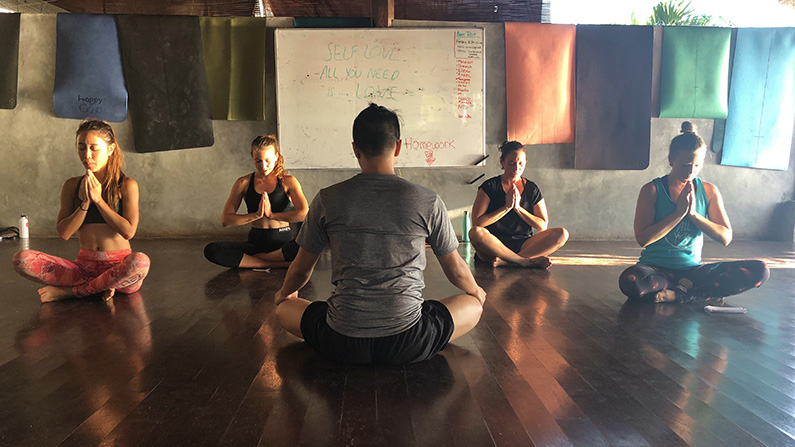
Where To Teach
Before applying to teach classes its a good idea to get started with putting together a Yoga Teacher Resume. This can help you stand out from the crowd as you step out into the vast yoga teaching world. No person is the same, and no teacher will be the same, so expand on what makes you, you!
Include other skills you might have such as previous fitness training experience, massage, reiki, customer service, cooking or event planning, as these are excellent additions to add to your resume. Be sure to add details of your training and any additional trainings, First Aid/CPR courses, or workshops you attend as a teacher. Add a picture of yourself at the top of the page and include a small paragraph or two about who you are and what is at the centre of what you teach. Let your personality shine through!
Once you have your resume up to date, its time to start thinking about where you’d like to hold your classes and where people that fit within your niche would go for classes. There may be opportunities to teach at your local community centers, village halls, schools, hotels, or health food stores. Enquire where you can and consider the time slots available and go from there. Drumming up support by inviting family and friends to your first few classes may help instill some further confidence as well.
Or, you could apply to yoga studios or fitness centers in your area, just because you are a new teacher it doesn’t mean you won’t be considered. Some studios will ask for a certain amount of experience before leading a class, but they may also offer apprenticeships or the chance to assist in classes with other teachers. Often you’ll be asked to do a trial class or an audition so the studio can see that you can teach. Preparing a sequence beforehand and going over it thoroughly will help.
How to Advertise
Marketing yourself in our modern world is something of a must, but it doesn’t have to feel uncomfortable or ‘un-yogic’. Start by deciding what you will call your business as a self-employed teacher, using your name is a straightforward way for people to find you easily.
Decide on your rates for your classes, private 1 to 1s or corporate sessions. Take into account the prices of other fitness classes and how much rent you’ll be paying. Or if you are taken on by a studio or sports centre agree a rate of pay for your classes.
As you find spaces to teach at look into how you’ll advertise the classes and who you’ll advertise to. Handing out flyers, advertising on social media, posting in local groups or newspapers are all ways to get the word out about your classes to potential students.
Setting up a website or a social media page for your yoga business is another great way to reach more people. Websites give the opportunity of blogging so that students can see what you are like and what interests you, or you can instead share your experience with yoga. Sites such as Wix and WordPress can be an excellent starting point so you can build a website yourself with the templates on offer. You will also need to learn new online skill like SEO so people can find you online. On your website, you can create a class timetable, an events page, as well as providing your contact information, so people can contact you easily. There, you can also advertise promotions and deals for classes.
Learning Never Ends
The great aspect of choosing a yoga teacher as your career is the opportunity to keep learning continuously as well as being a student of yoga for life. Doing a training course is the first stepping stone into teaching, yet there are many more trainings, workshops, and courses that you can do to help you expand your knowledge. Through the rise of online learning, there are many opportunities to study courses offered by many well-known teachers from across the globe, to help you learn at a pace suitable for you, in your own home.
Another way to learn, as well as a way to find a dose of renewed inspiration, is to attend classes by more experienced teachers in your area. This is also a great way to get to know other teachers and to network, which could lead to further opportunities in the future. You may be able to cover their classes if they need a hand or assist them in workshops. It’s also great to have someone who may be able to give you some support as you navigate teaching and running your own business.
As you balance teaching with your own practice, you’ll soon learn how to bring your discoveries, light-bulb moments, and realisations on the mat and into your classes. It won’t always be easy to find time to arrive at your mat when juggling teaching or working, but never underestimate the wisdom and lessons gained from your own regular practice. It’s a vital part of being an authentic teacher as you can’t teach what you do not know or what you have not experienced.
Becoming a Yoga Teacher is a rewarding journey to take. Remember that all good things take time and try to be gentle with yourself if you feel you aren’t doing good enough, as even the greatest teachers were new to it once. Learning never stops and as time goes on you’ll find new ways to market yourself, teach different students, and to grow as a teacher. It isn’t always easy but it if you allow yourself to learn from your mistakes and be open to opportunities, you never know where teaching yoga could take you.
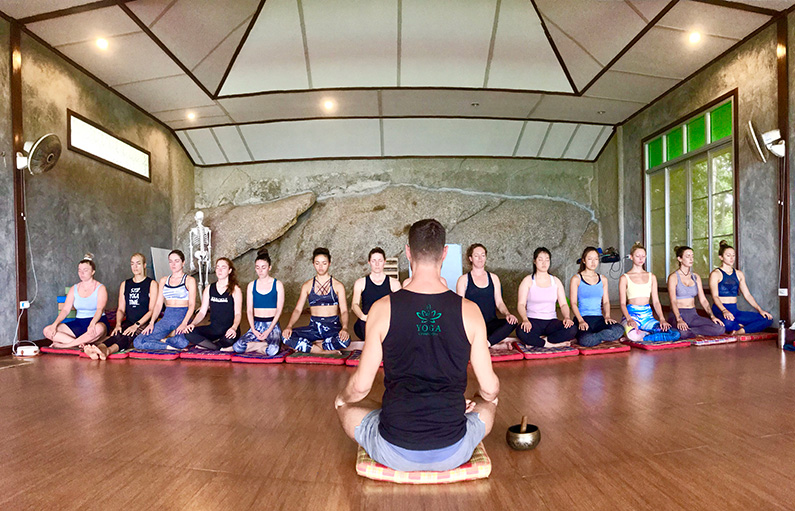
Read More Blogs
Want to Become a Yoga Teacher and/or
Deepen your Yoga Practice?
2 FREE EBOOKS FOR YOU:
- 20 things to know before choosing a yoga teacher training
- 7 tips to deepen your yoga practice right now
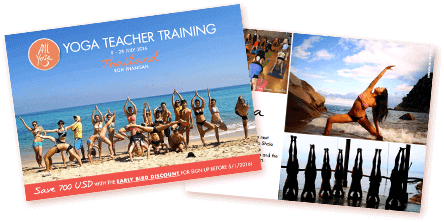
Copyright © 2024, All Yoga International ltd. All Rights Reserved
Privacy Policy